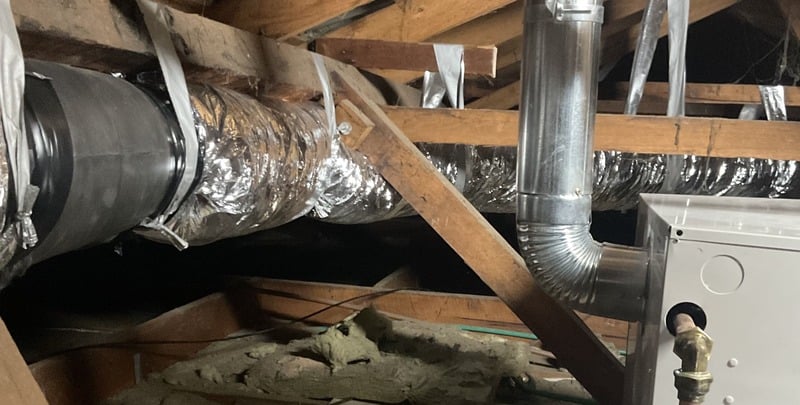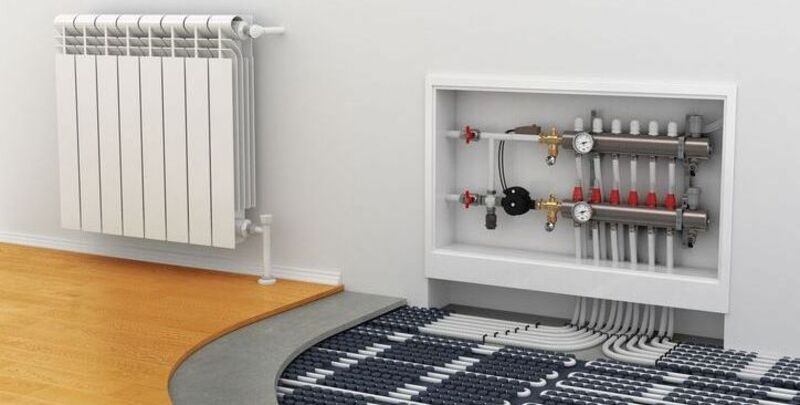
Ducted Heating vs a Hydronic Heating System
Ducted heating vs a hydronic heating system: which is perfect for your home? For in-home comfort, selecting an appropriate heating system is of paramount importance.
It dictates not only the warmth and cosiness of our living spaces but also influences energy efficiency and cost-effectiveness.
This comprehensive comparison seeks to delve into the intricacies of two prominent heating systems − ducted heating and hydronic heating − shedding light on their functionalities, advantages, drawbacks, and the factors influencing their effectiveness.
What is Ducted Heating?
Ducted heating is a testament to efficiency through its intricate network of ducts traversing the entire home.
Typically, a furnace, the system’s heart, generates warm air and propels it into different rooms through interconnected ducts in a central heating unit.
Advantages of Ducted Heating
- Efficient heating for larger spaces: Ducted systems excel in their ability to efficiently warm expansive areas, making them the preferred choice for homes with multiple rooms and open floor plans.
- Quick and even heat distribution: The forced air delivery mechanism ensures a rapid and uniform warmth spread, eliminating chilly corners and providing consistent comfort.
- Centralised control and programmability: Ducted systems often come equipped with centralised thermostats, allowing for convenient programming and temperature control throughout the home.
Drawbacks of Ducted Heating
- Installation costs and complexities: While ducted heating systems offer unparalleled comfort, their initial setup can incur significant charges, often requiring professional installation due to the complexity of the ductwork.
- Energy efficiency considerations: Ducted systems may experience heat loss through the ducts, affecting overall energy efficiency and potentially leading to higher operational costs.
- Limited zoning options: Achieving distinct temperatures in individual rooms can be challenging, limiting the level of customisation in addressing specific comfort needs.
What is a Hydronic Heating System?
Hydronic heating, on the other hand, operates on the principle of circulating heated water through a system of pipes installed beneath the floor or within walls.
The warmth from the water radiates into the living space, creating a comfortable and efficient heating solution.
Advantages of Hydronic Heating
- Energy efficiency and cost-effectiveness: Hydronic systems are renowned for their high energy efficiency, potentially resulting in substantial long-term savings on energy bills.
- Zoning capabilities for personalised comfort: The versatility of hydronic systems allows for creating zones, enabling occupants to control temperatures independently in different areas of the house, optimising comfort and energy usage.
- Compatibility with various floor coverings: Hydronic systems integrate with multiple flooring materials, ensuring harmony with home aesthetics and design preferences.
Drawbacks of Hydronic Heating
- Slower response time: Hydronic systems may exhibit a slower response time compared to ducted heating, especially in larger spaces, requiring patience before reaching the desired temperature.
- Initial installation costs: While hydronic systems prove cost-effective in the long run, the upfront installation costs can be comparatively higher than some alternative heating solutions.
- Potential maintenance requirements: Regular maintenance, including checking for leaks and ensuring proper water circulation, is crucial for optimal performance and longevity.
Analysing the Difference
Both systems have their merits, but understanding the differences between them is crucial for making the right choice for your home.
Ducted heating relies on a network of ducts installed throughout your home, distributing warm air from a central heating unit. This system is efficient and provides uniform heating, ensuring every corner of your house stays comfortable during the chilly months.
On the other hand, hydronic heating operates by circulating hot water through pipes installed in the floors, walls, or radiators. Instead of blowing hot air, it warms surfaces, creating a gentle, radiant heat that many find more comfortable and less drying than forced air systems.
One key difference between the two is the method of heat distribution. While ducted heating relies on air, hydronic heating uses water, which can be more energy-efficient in certain situations. Additionally, hydronic systems offer the flexibility of zoning, allowing you to control the temperature of individual rooms.
Consider factors like your budget, home layout, and personal preferences when deciding between ducted and hydronic heating. Each has its advantages, so weigh them carefully to ensure your home stays warm and comfortable throughout the winter months.

Making the Right Heating Choice
The comparison between ducted and hydronic heating systems reveals a nuanced landscape of strengths and weaknesses. The choice between these systems hinges on individual preferences, budget constraints, and the specific heating requirements of a given household.
For those prioritising swift, uniform heating in larger spaces with centralised control, ducted heating emerges as the optimal choice. Conversely, if energy efficiency, zoning capabilities, and compatibility with various flooring options are paramount, hydronic heating is the preferred solution.
As technology advances, the future of home heating holds promises of even more innovative solutions. In the coming years, sustainable and efficient options will likely take centre stage, ensuring a harmonious blend of comfort, convenience, and environmental responsibility.
By staying attuned to these developments, homeowners can look forward to a future where heating systems meet their needs and contribute to a more sustainable and eco-friendly environment. Reach out to your professional service providers for installations and repairs on your heating systems.
Please note: This information is provided for advice purposes only. Regulations differ from state to state, so please consult your local authorities or an industry professional before proceeding with any work. See our Terms & Conditions here.
Published: 2 April 2024
